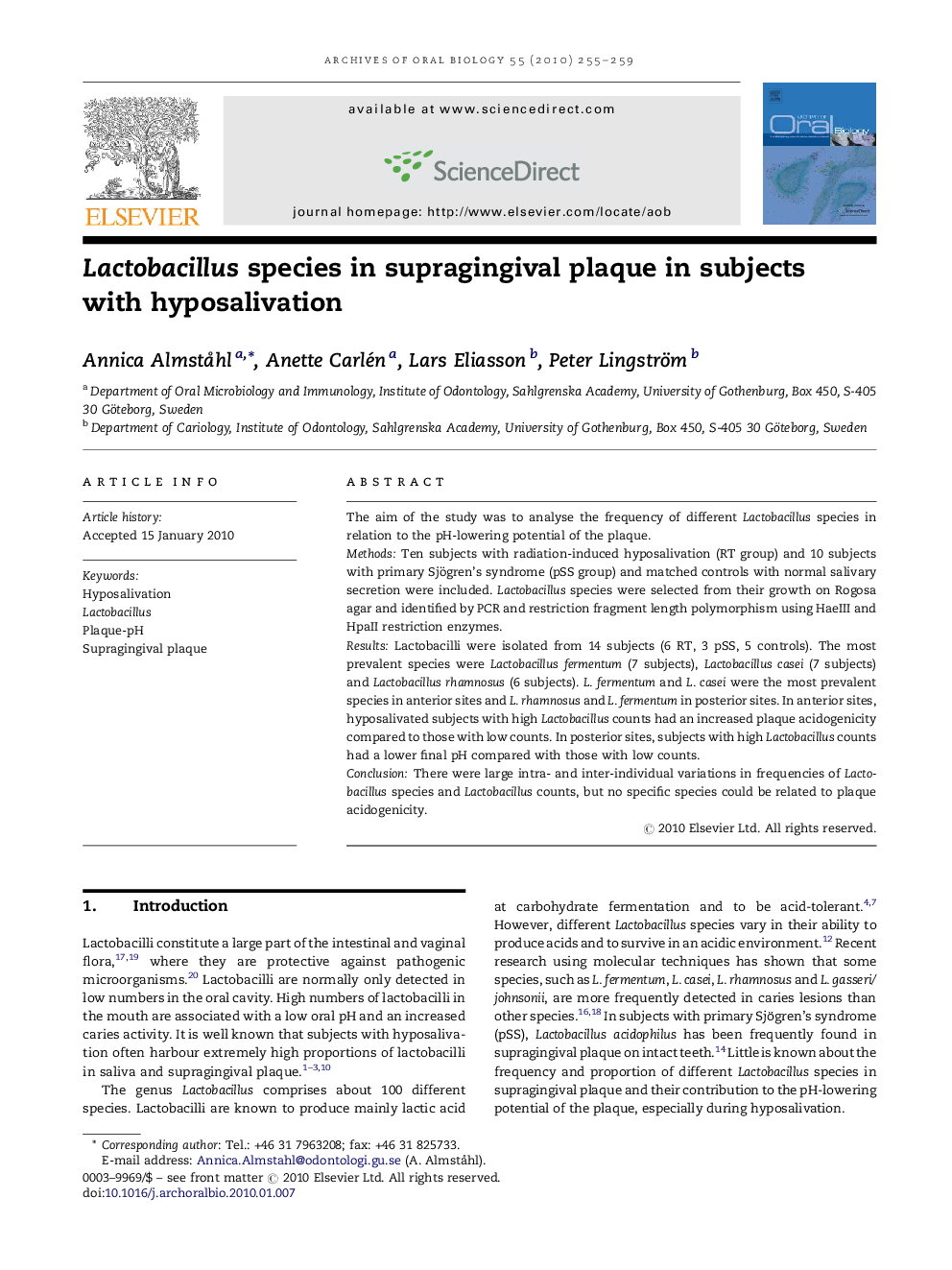| Article ID | Journal | Published Year | Pages | File Type |
|---|---|---|---|---|
| 3121130 | Archives of Oral Biology | 2010 | 5 Pages |
The aim of the study was to analyse the frequency of different Lactobacillus species in relation to the pH-lowering potential of the plaque.MethodsTen subjects with radiation-induced hyposalivation (RT group) and 10 subjects with primary Sjögren's syndrome (pSS group) and matched controls with normal salivary secretion were included. Lactobacillus species were selected from their growth on Rogosa agar and identified by PCR and restriction fragment length polymorphism using HaeIII and HpaII restriction enzymes.ResultsLactobacilli were isolated from 14 subjects (6 RT, 3 pSS, 5 controls). The most prevalent species were Lactobacillus fermentum (7 subjects), Lactobacillus casei (7 subjects) and Lactobacillus rhamnosus (6 subjects). L. fermentum and L. casei were the most prevalent species in anterior sites and L. rhamnosus and L. fermentum in posterior sites. In anterior sites, hyposalivated subjects with high Lactobacillus counts had an increased plaque acidogenicity compared to those with low counts. In posterior sites, subjects with high Lactobacillus counts had a lower final pH compared with those with low counts.ConclusionThere were large intra- and inter-individual variations in frequencies of Lactobacillus species and Lactobacillus counts, but no specific species could be related to plaque acidogenicity.
